#The Culture: Hip Hop and Contemporary Art in the 21st Century
Video
Mark Bradford, Biggie, Biggie, Biggie, 2002, Permanent wave end papers, electrophotographic print paper, acrylic paint on canvas, 10/26/23 #stlartmuseum by Sharon Mollerus
#Saint Louis Art Museum#Permanent wave end papers#The Culture: Hip Hop and Contemporary Art in the 21st Century#electrophotographic print paper#Mark Bradford#Biggie#Missouri#2002#acrylic paint on canvas#St. Louis#MO#flickr
2 notes
·
View notes
Text
There Are More Beautiful Things Than Beyoncé uses political and pop-cultural references as a framework to explore 21st century black American womanhood and its complexities: performance, depression, isolation, exoticism, racism, femininity, and politics. The poems weave between personal narrative and pop-cultural criticism, examining and confronting modern media, consumption, feminism, and Blackness. This collection explores femininity and race in the contemporary American political climate, folding in references from jazz standards, visual art, personal family history, and Hip Hop. The voice of this book is a multifarious one: writing and rewriting bodies, stories, and histories of the past, as well as uttering and bearing witness to the truth of the present, and actively probing toward a new self, an actualized self. This is a book at the intersections of mythology and sorrow, of vulnerability and posturing, of desire and disgust, of tragedy and excellence.


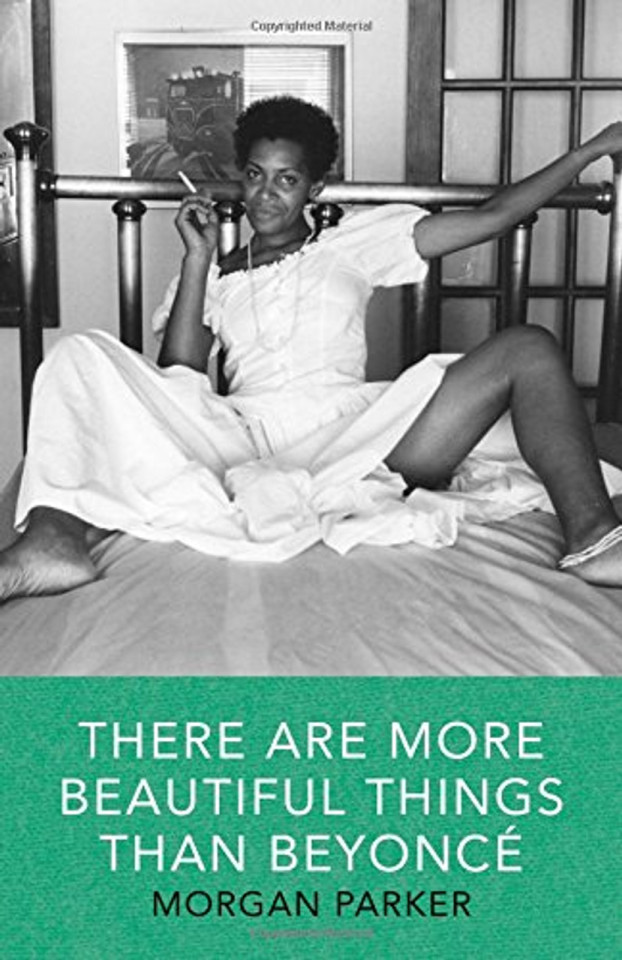
#book: there are more beautiful things than beyonce#author: morgan parker#genre: poetry#genre: feminism#genre: non fiction
7 notes
·
View notes
Text

Dear Gus & Magnus,
Mom and I walked the galleries at the St. Louis Museum of Art today, then went to the Kemper Museum of Contemporary Art at Washington University. We agreed the best thing we saw all day was a video installation that was part of "The Culture: Hip Hop and Contemporary Art in the 21st Century." The video we liked so much had hip hop playing over a two-channel video with footage from Compton in the 1990s. I regret that I didn't write down the artist's name, but I could have sat there and watched it for a long time. Especially with your beautiful mother sitting beside me.
Nene was supposed to drop you two at school and Yiayia would pick you up, but the Village called and said Mags had a fever, so Nene went back and picked him up and stayed with him until Yiayia could get Gus after school. Mom considered leaving a day early to get back and take care of Magnus -- she loves you two very much -- but I convinced her we should take advantage of our time away and that Yiayia and Nene had things under control.
I wanted a coffee and Mom needed food, so we found a place called Basso that had a cool underground vibe before going back to our hotel to get ready for dinner. For dinner we went to the Brasserie by Niche and ate well, but still not as well as we did at The Crossing. (While I love Asian food and could eat it every day, Mom and I both decided we like French food the best for special occasions.)
Dad.
St. Louis, Missouri. 11.17.2023 - 1.52pm
4 notes
·
View notes
Photo

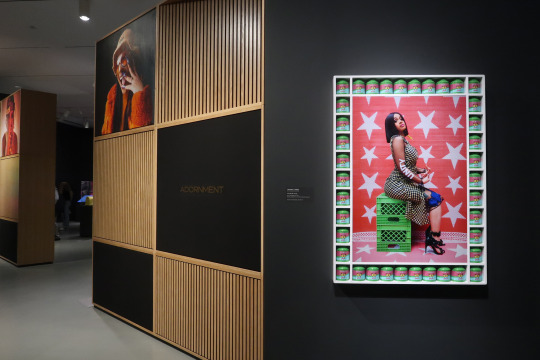

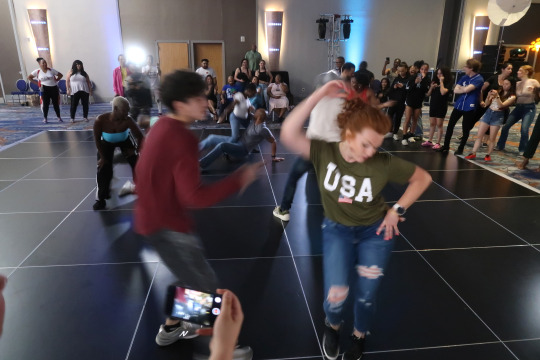
Baltimore, Maryland
May 5-8, 2023
1. Patio Party at World Dance Festival 2023.
2. “The Culture: Hip Hop and Contemporary Art in the 21st Century” exhibit at Baltimore Museum of Art.
3. Get Your Grits On with Collard Greens at Miss Shirley’s Cafe.
4. Jack and Jill Contest at World Dance Festival 2023.
Photo Credit: karmaalwayswins
#world dance festival#social dancing#baltimore museum of art#hip hop#baltimore#jack and jill contest#dance competition#dance festival#miss shirley's cafe#maryland#not sure how to tag my own posts at this point
3 notes
·
View notes
Text
From Street to Stage: The Evolution of Breakdancing Culture
Breakdancing, often called breaking, is more than just a dance form; it's a cultural phenomenon that has transcended its origins in the streets to become a global movement. Originating in the Bronx borough of New York City in the 1970s, breakdancing has undergone a remarkable evolution, shaping and being shaped by urban culture, music, and societal dynamics. In exploring breakdancing culture, we delve into its origins, growth, and impact on contemporary society.
The Birth of Breakdancing: A Cultural Revolution
Breakdancing emerged from the streets of the Bronx amidst a backdrop of economic decline, social unrest, and cultural ferment. Influenced by diverse musical genres such as funk, soul, and disco, as well as martial arts and gymnastics, young dancers developed a distinct style characterized by intricate footwork, acrobatic maneuvers, and improvisational expression. These dancers, known as b-boys and b-girls, congregated in parks, playgrounds, and street corners, engaging in spontaneous battles and ciphers to showcase their skills and creativity.
The Golden Era: Breakdancing Goes Mainstream
By the early 1980s, breakdancing had burst onto the mainstream cultural scene, propelled by media exposure through films, music videos, and television shows. Movies like "Breakin'" and "Beat Street" brought breakdancing to the silver screen. At the same time, music videos featuring iconic artists like Run-D.M.C., Grandmaster Flash, and Michael Jackson showcased the dance form to a global audience. Breakdancing became synonymous with hip-hop culture, with its distinctive fashion, language, and attitude permeating popular consciousness.
Commercialization and Controversy: The Dark Side of Success
As breakdancing gained popularity, it also faced challenges associated with commercialization and appropriation. Critics accused mainstream media and corporate interests of exploiting breakdancing for profit, diluting its authenticity and cultural significance. Additionally, concerns arose about the safety and ethics of competitive battles as dancers pushed the boundaries of physical endurance and risk-taking. Amidst these controversies, some purists within the hip-hop community sought to preserve the grassroots spirit of breakdancing by maintaining its connection to its origins in the streets.
Resilience and Revival: Breakdancing in the 21st Century
Despite facing setbacks and criticism, breakdancing has experienced a resurgence in recent years, fueled by a new generation of dancers and enthusiasts. International competitions such as the Red Bull BC One and the Freestyle Session have elevated breakdancing to a professional sport, attracting top talent worldwide. Breakdancers have also found opportunities to perform in theatrical productions, corporate events, and multimedia projects, expanding the reach and visibility of the dance form.
Breaking Boundaries: Breakdancing as a Global Phenomenon
One of the most remarkable aspects of breakdancing culture is its ability to transcend geographical and cultural boundaries. Breakdancing has captivated audiences and inspired communities globally, from New York City to Tokyo, Paris to Rio de Janeiro. Dancers from diverse backgrounds and traditions have embraced breakdancing as a universal language of creativity and self-expression, forging connections and friendships across borders.
Breaking Stereotypes: Redefining Gender and Identity
Breakdancing has also played a transformative role in challenging traditional gender norms and stereotypes within the dance community. Historically dominated by male dancers, breakdancing has seen a surge in female participation and representation in recent years. B-girls have emerged as formidable competitors and role models, breaking down barriers and paving the way for greater inclusivity and diversity within the dance form. Moreover, breakdancing culture has provided a platform for individuals of all gender identities and sexual orientations to express themselves authentically and without judgment.
Breaking New Ground: The Future of Breakdancing Culture
As breakdancing continues to evolve and adapt to changing times, its future remains bright and full of possibilities. The dance form's ability to innovate and reinvent ensures its relevance in an ever-changing cultural landscape. With the rise of social media and digital technology, breakdancers have unprecedented opportunities to connect, collaborate, and showcase their talent to a global audience. Moreover, initiatives to preserve and document breakdancing's history and legacy ensure its cultural significance will endure for future generations.
From its humble beginnings in the streets of the Bronx to its current status as a global cultural phenomenon, breakdancing culture has evolved remarkably. What began as a form of creative expression for marginalized youth has transcended boundaries of geography, gender, and identity to become a symbol of resilience, innovation, and empowerment. As breakdancing continues to inspire and unite communities worldwide, its legacy as a transformative force in contemporary culture is assured. With its boundless energy, creativity, and spirit of collaboration, breakdancing culture will undoubtedly continue to thrive and evolve in the years to come.
0 notes
Text
Hop to it: Bronx-born musical genre’s culture unfolds at Frankfurt exhibition
A photo of Robert Lugo’s glazed ceramic “Street Shrine 1: A Notorious Story (Biggie),” on display at “The Culture: Hip Hop and Contemporary Art in the 21st Century” at the Schirn in Frankfurt, Germany. (Michael Abrams/Stars and Stripes)
A new arrival at the famed Schirn exhibition hall in Frankfurt examines the influence of hip-hop, a musical genre that started as a block party 50 years ago in…

View On WordPress
0 notes
Text
1 note
·
View note
Text
Unforgettable Moments In Musical History
In the vast symphony of human existence, certain notes echo through time, marking moments when music transcended mere entertainment to become a cultural touchstone. Let's journey through the archives of musical history, where beats and melodies created ripples that still resonate today.

The Birth Of Rock 'n' Roll
In the mid-1950s, the world witnessed a seismic shift in the music landscape with the advent of Rock 'n' Roll. The rebellious sounds of Chuck Berry's "Johnny B. Goode" and Elvis Presley's "Hound Dog" broke the traditional mold, heralding an era where youth culture found its voice. This genre not only became a global phenomenon but also laid the foundation for subsequent revolutionary movements in music.
Also Read: Stay Updated On Latest Music Trends
Woodstock '69: A Love Revolution
In the summer of 1969, a dairy farm in upstate New York hosted the most iconic music festival in history – Woodstock. Against a backdrop of cultural upheaval, half a million people gathered to celebrate peace, love, and music. Jimi Hendrix's electrifying rendition of "The Star-Spangled Banner" on his guitar remains etched in collective memory, symbolizing the counterculture movement and the power of music to unite generations.
Thriller's Thrust Into Pop Immortality
Fast forward to 1982, and Michael Jackson's "Thriller" album redefined the boundaries of pop music. With groundbreaking music videos, innovative dance moves, and a sound that seamlessly blended pop, rock, and funk, Jackson became the undisputed King of Pop. The album's title track, accompanied by the iconic zombie dance, not only dominated charts but also transformed the music video into an art form.
Nirvana's Grunge Revolution
The early '90s witnessed the rise of grunge, spearheaded by Nirvana. Kurt Cobain's anguished lyrics and raw guitar riffs in "Smells Like Teen Spirit" epitomized the disenchanted youth of the era. This marked a departure from the polished sound of the '80s, bringing raw authenticity back into mainstream music. Nirvana's success paved the way for alternative rock's dominance in the following years.
Also Read: Create Personalized Playlists With These Music Apps
The Hip-Hop Renaissance
The late '80s and early '90s saw the emergence of hip-hop as a cultural force. Acts like Run-D.M.C., Public Enemy, and N.W.A. not only laid the groundwork for the genre but also addressed societal issues. Hip-hop became a platform for marginalized voices, offering a raw and unfiltered lens into the realities of urban life. The genre's influence continues to reverberate globally, shaping contemporary music and culture.
Queen's Live Aid Triumph
In 1985, Queen delivered a performance at the Live Aid charity concert that has since been hailed as one of the greatest in rock history. Freddie Mercury's commanding stage presence, coupled with the band's anthemic hits, captivated a global audience. The medley of "Bohemian Rhapsody," "Radio Ga Ga," and "We Will Rock You" showcased Queen's ability to command a crowd and solidified their place as rock royalty.
The Rise Of K-Pop
In the 21st century, the world witnessed the meteoric rise of K-Pop, a genre that transcended cultural and linguistic barriers. Groups like BTS and BLACKPINK became global sensations, demonstrating the power of music in connecting diverse audiences. With infectious beats, mesmerizing choreography, and a dedicated fan base, K-Pop has become a cultural phenomenon, redefining the global music landscape.
Also Read: The Impact Of Music On Our Emotions
Conclusion
From the rebellious echoes of Rock 'n' Roll to the global phenomenon of K-Pop, these moments in music history have shaped the cultural fabric of their times. They remind us that music is more than a melody; it is a force that binds people across generations, transcending boundaries and leaving an indelible mark on the human experience.
0 notes
Text
Hip Hop as Changemaker at Saint Louis Art Museum
Special Edition StitchCast Studio LIVE!
Saint Louis Art Museum Ferrell Auditorium
in association with the exhibition The Culture:
Hip Hop and Contemporary Art in the 21st Century
Recorded live on Thursday, November 9, 2023
StitchCast Studio is an award-winning youth-led podcast
produced by Saint Louis Story Stitchers.
Hip Hop as Change Maker
Podcast + Performance
StitchCast GUESTS
Damon Davis is…
View On WordPress
0 notes
Text
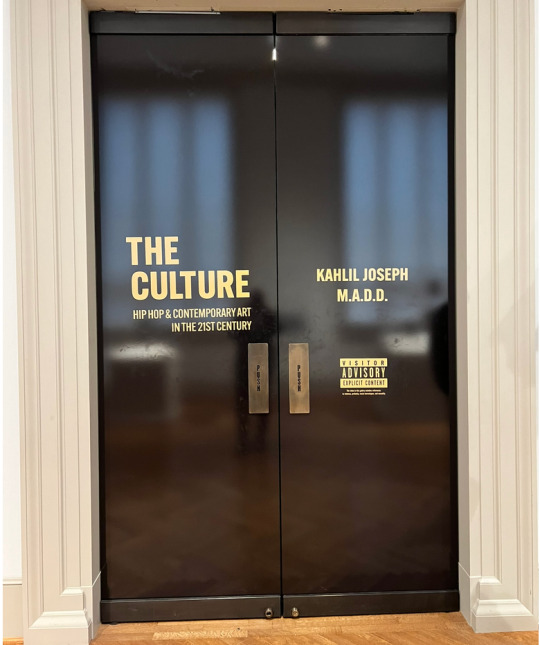
Kahlil Joseph M.AD.D.
The Culture
Hip Hop & Contemporary Art in the 21st Century
#the st louis art museum#home sweet home#meet me in st. louis#hip hop and contemporary art in the 21st century
1 note
·
View note
Text
Honoring African American Culture in the 21st Century
African-American Culture is an ever-evolving tradition that has left an indelible mark on American society in various ways, from music and art to literature, food, and social movements - its influence runs deep throughout American society. Here we will examine some of its diverse aspects while paying homage to its creativity, resilience and lasting effect upon global affairs.

African American culture can be traced to its historical roots: forced migration by slave traders across Atlantic. Although living conditions were challenging and conditions difficult, members of African diaspora managed to preserve traditions, customs, languages, religions and practices while adapting and assimilate new influences from all corners of New World into what would later become African American culture that continues to develop today.
Nationhood and music go hand-in-hand.
One of the greatest contributions of African American Culture can be seen through its lasting mark on music. Beginning with sacred and work songs of plantation life to blues, gospel, jazz and hip-hop today; African American music has provided voice and rhythm for millions across America - from Louis Armstrong and Aretha Franklin during plantation life through to Kendrick Lamar today who is revolutionizing music as well as political and social scenes simultaneously.
Art and Literature as Reflectors and Reformers of Society
African-American authors and artists have had an enormously important role in shaping American culture and literature. Influential figures like Langston Hughes, Zora Neale Hurston and James Baldwin played crucial roles in combatting race issues as well as social injustice to create more diverse literary scenes worldwide. Their works from engaging novels to powerful poems still serve as sources of inspiration to readers worldwide.
Visual arts can also be transformative, with artists such as Jacob Lawrence, Faith Ringgold and Jean-Michel Basquiat challenging established practices through their stunning depictions of African American life and history. Their vibrant images offer a window into understanding America.
African American cuisine is an exquisite example of cultural adaptability and innovation, reflecting how African Americans managed to turn rations from daily necessities into delectable meals, drawing from West African, Caribbean, European and South American influences - today, dishes such as Gumbo, Soul Foods and BBQ are enjoyed worldwide - evidence of African Americans' ability to find pleasures outside of the kitchen.
Social Movements as Catalysts for Change
African-American Culture has always been at the center of numerous historical movements that have helped define American history. From abolitionist movements through civil rights era and beyond, notable leaders like Frederick Douglass, Harriet Tubman, Martin Luther King Jr. and others have tirelessly advocated for equality, justice and freedom - serving as role models and inspirations to changemakers worldwide.
Contemporary Voices: Shaping the Future
African American culture continues to blossom in the 21st century and produce an entirely new generation of artists, activists and thought-leaders. From filmmakers such as Ava DuVernay and Ryan Coogler to music artists Beyonce and Kendrick Lamar whose works not only influence popular culture but also challenge longstanding standards; their contributions serve as powerful reminders that African American history continues to shape global politics in powerful ways.
Conclusion
African American Culture stands as a powerful testimony of creativity, strength and resilience among a group that has endured centuries of hardship. Its effects can be felt throughout American society; indeed its reach extends well beyond it. Let us remember all those who contribute towards creating a more inclusive, multicultural and vibrant global society in tribute to African American culture's diverse tapestry.
1 note
·
View note
Video
Megan Lewis, Fresh Squeezed Lemonade, 2022, Oil and acrylic on fabric, 10/26/23 #stlartmuseum by Sharon Mollerus
#Saint Louis Art Museum#2022#Fresh Squeezed Lemonade#The Culture: Hip Hop and Contemporary Art in the 21st Century#Missouri#Megan Lewis#Oil and acrylic on fabric#St. Louis#MO#flickr
1 note
·
View note
Text
The Culture
The Culture: Hip Hop and Contemporary Art in the 21st Century is the art show that we viewed yesterday. This show has been on display at the art museum all summer, but since we have been out of town, we only just now got around to seeing it. It was put on in collaboration with the Baltimore Museum of Art. There was plenty of bling on display, some graffiti, plus original artworks like this…
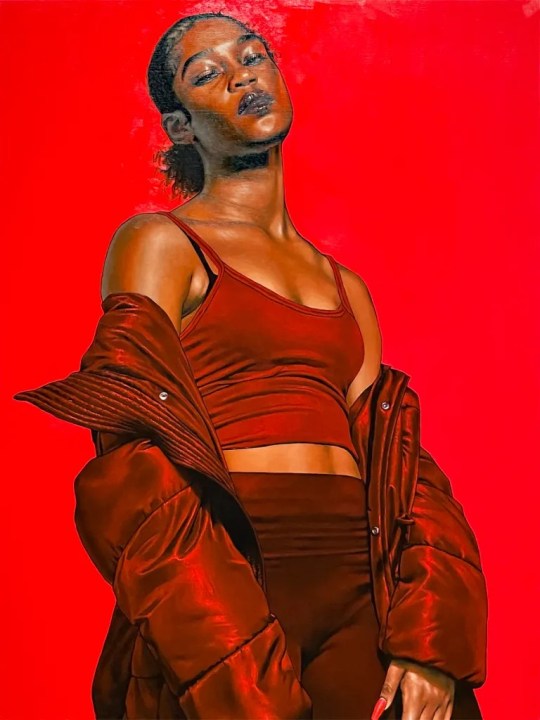
View On WordPress
0 notes
Text
0 notes
Photo
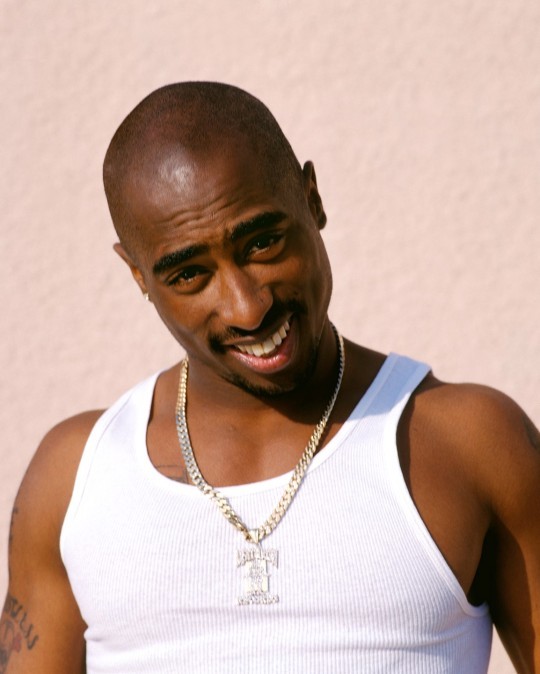
Today we remember the passing of Tupac Shakur who Died: September 13, 1996 in Las Vegas, Nevada
Tupac Amaru Shakur (born Lesane Parish Crooks, June 16, 1971 – September 13, 1996), better known by his stage name 2Pac and, later, by his alias Makaveli, was an American rapper, songwriter, and actor. He is widely considered one of the most influential rappers of all time. Much of Shakur's work has been noted for addressing contemporary social issues that plagued inner cities, and he is considered a symbol of activism against inequality.
Lesane Crooks was born to Afeni Shakur (née Alice Faye Williams), a member of the Black Panther Party, and she renamed him Tupac Amaru Shakur—after Peruvian revolutionary Túpac Amaru II—when he was a year old. He spent much of his childhood on the move with his family, which in 1986 settled in Baltimore, Maryland, where Shakur attended the elite Baltimore School for the Arts. He distinguished himself as a student, both creatively and academically, but his family relocated to Marin City, California, before he could graduate. There Shakur took to the streets, selling drugs and becoming involved in the gang culture that would one day provide material for his rap lyrics. In 1990 he joined Digital Underground, an Oakland-based rap group that had scored a Billboard Top 40 hit with the novelty single “The Humpty Dance.” Shakur performed on two Digital Underground albums in 1991, This Is an EP Release and Sons of the P, before his solo debut, 2Pacalypse Now, later that year.
2Pacalypse Now was a radical break from the dance party sound of Digital Underground, and its tone and content were much closer to the works of Public Enemy and West Coast gangsta rappers N.W.A. The lack of a clear single on the album limited its radio appeal, but it sold well, especially after U.S. Vice Pres. Dan Quayle criticized the song “Soulja’s Story” during the 1992 presidential campaign. That same year Shakur joined the ranks of other rappers-turned-actors, such as Ice Cube and Ice-T, when he was cast in the motion picture Juice, an urban crime drama. The following year he appeared in Poetic Justice, opposite Janet Jackson, and he released his second album, Strictly 4 My N.I.G.G.A.Z. The album did not stray far from the activist lyricism of his debut, but singles such as “Holler If Ya Hear Me” and “Keep Ya Head Up” made it much more radio-friendly.
With increased fame and success came greater scrutiny of Shakur’s gangsta lifestyle. A string of arrests culminated with a conviction for sexual assault in 1994; he was incarcerated when his third album, Me Against the World, was released in 1995. Shakur was paroled after serving eight months in prison, and he signed with Suge Knight’s Death Row Records for his next release. That album, All Eyez on Me (1996), was a two-disc paean to the “thug life” that Shakur embodied. It debuted at number one on the Billboard charts and sold more than five million copies within its first year of release. Quick to capitalize on his most recent success, Shakur returned to Hollywood, where he starred in Bullet (1996) and Gridlock’d (1997).
On the evening of September 7, 1996, Shakur was leaving a Las Vegas casino, where he had just attended a prizefight featuring heavyweight champion Mike Tyson, when he was shot by an unknown assailant. The incident, believed by many to be the result of an ongoing rivalry between the East Coast and West Coast rap communities, shocked the entertainment world. Shakur died six days later. In spite of his relatively short recording career, Shakur left an enduring legacy within the hip-hop community. His popularity was undiminished after his death, and a long succession of posthumous releases (many of them were simply repackaged or remixed existing material, and most were of middling quality) ensured that “new” 2Pac albums continued to appear well into the 21st century. Shakur was posthumously inducted into the Rock and Roll Hall of Fame in 2017.
4 notes
·
View notes
Text
At This Time...
Sitting here paralyzed for days, trying to figure out what more I can do. Quarantined, distracted from grading these final papers by the fires in my feed, knowing that donating to activist organizations and RT’ing, on top of crying, shaking and cursing, is not nearly enough. Plus, just about anything I say/do on the socials feels like a f*cking performance. All of it — except the anger and the stream of information that continues to reassert the utter disdain that this country’s White supremacy (not just Tr*mp, but the whole friggin’ establishment) has for Black and Brown people, here and throughout the world. The insidiousness.
Even wallowing in my own exhaustion — jobless, hope on a tattered string, watching the powers that be f*ck the populace over in every way imaginable… All of it feels self-pitying, when I can recognize my privilege and be struck by the existential sorrow that, even before this week’s events, or the racial disparity of the pandemic’s victims, surrounds most Black American lives. When I hear my Black and Brown friends and colleagues express their own exhaustion, as so many have over the past five days, it has the weight not just of the moment, or a political term, but of history. Personal, familial, written in volumes, reaffirmed constantly — and running contrary to America’s dip-shit self-mythologizing.
And yet... Despite this horror-show past, with white supremacy’s attempts to subjugate them for generations, Black America’s ability to move society forward has been beyond fucking remarkable. The creation of culture, the strength of moral character, the depth of communal compassion. It is no overstatement that the moral and creative compass of not just Black excellence but of the African-American community I’ve known, has been among primary lodestars of my life in this country. And while I do not expect all other folks to feel the same way I do, I most certainly judge those who feel contrary — or those who dismiss the notion that, if anyone’s ever made this hard land great in the past, it’s been Black Americans.
And that in the struggle to understand the fullness of this account, you will find pretty much all contemporary crises. It’s incredible that, in 2020, a majority of people still don’t comprehend the connections between systemic white privilege and Black death in the headlines, between colonization culture and the overwhelming inequality rampant in American society, between the contemporary malaise of the Western imagination and the whitewashing of the media. For a person who does not simply work in/with culture founded on the Black experience, but gets their very lifeblood form it, this is a hard fucking pill to swallow. The big “YOU don’t get it!”
So, when thinking about WTF else I can do, as a writer who deeply supports Black American communities in the struggle against white supremacy, I thought it worthwhile to reiterate some of this historical record’s personal and social importance. Having just spent a semester teaching NYU sophomores about how we got here — while re-reading classic texts by LeRoi Jones and Ralph Ellison and Isabel Wilkerson, Nikole Hannah Jones’s massive new one, and discussing the contemporary settings of these ideas with DeForrest Brown Jr. and Angel Bat Dawid — what I believe should be our collective mission is fresh and clear in my mind.
This is where music comes in. It’s especially important that anyone who listens to contemporary music in the 21st century, also participates in reappraising these whitewashed texts, restoring Blackness back to the center of this culture. Not only to acknowledge the proper origins of the forms and ideas that are so important to it — and thus, acknowledge the people who developed these forms and ideas — but act accordingly in times of crisis, requiring us to use our white privilege to support pro-Black and anti-colonialist positions in a way that could actually lead to structural change. To “see something, say something” when companies belligerently monetize the (Black) people’s culture and do not recompense the community, or when cops act like overseers that treat Black lives as wanton boys do flies.
Because… Here’s the thing: blues and jazz are the basis of all great new music of the last 100 years — paving the way for the post-modern Black electronic music (hip-hop, house and techno and electro) which is the core of pretty much all popular sounds of the 21st century. And the Black experience is the DNA of these musics — meaning, in the clearest terms, that we don’t get to have this music without the burden that preceded it. This is at the core of the accusation that “loving Black culture more than Black people.” You do NOT get to do one without the other, and still call it “love.”
Unlike European art, that original Black music is not the product of some art-school- and conservatory-learned experiments. Or of commissions from a royal court. Or of direct updates on thousand-year folk forms. Oral traditional and molecular memory aside, Black American music’s past was almost completely — genocidally, is also a word — wiped away in the Middle Passage. So when it came to fruition in the years during and after Reconstruction, it did so as a personal Black expression of what to do and how to live in this new, foreign here-and-now, far from “home.” This music is, simultaneously, a lament and celebration, complaint and utopia, art and evidence, personal diary and modernist work. Nothing like that had been conceived before, and it was so revolutionary that almost no one’s been able to build a next-level to it since.
It was also the first musical art-form original to the United States. Now imagine: the engine of this art-form’s motivation was a desire to express oneself within a society that did not want to hear any of what you had to say. A society that, in many cases, did not regard you as fully human. And yet think of how Black music expresses the full spectrum of humane truths and emotions. Actually, fuck it, don’t read me telling you about it. Go listen to the Wesley Morris episode of the 1619 Project podcast, who does a far better job than I of narrating Black American music’s wonders. This is why remaining on the sidelines, or providing only cursory support to the uprising, does not sit well.
It is crucial that people around the world know this history when they hear a variation of these musics being described as “global phenomena” or “universal,” or divided into “genres.” Such terms might seem neutral, or even complementary to its creators; but at their core, they move to dilute the role that the Black experience played in its birth. And distancing the music from the people who made it (and why), mitigates the music’s values. What was once specific becomes conditional — out goes the particularity of its expressions (feelings, words, citations), and in come market-democratizing generalities, like capitalization and trends, elements that tend to be elevated by whoever controls mass communication. This is how a local culture becomes a global genre, and how some people who make “techno” or “jazz” music in [insert European city here] can’t comprehend why “neutrality” towards George Floyd’s death is a betrayal of their creative work.
But... They will do as they will do. And, as I said before, we will judge them - because it is on these very decisions and proclamations that the intention of the art-work (a crucial aspect in the value of the art-work — its contemporary “aura” some might say), that artists and their audiences are judged. And when I mis-step, my Black friends and colleagues will also judge me, and the humility and self-reflection with which I handle this will say volumes about what my cultural intentions are. Because for the rest of us, there never has been nor will continue to be a disconnection between the culture we have sworn allegiance to, and the need to change society’s norms, to speak about the need for social justice, and to continually reassert that #BlackLivesMatter and #BrownLivesMatter.
And that if you continue to engage with the words and ideas that I hope to continue putting out into the world, this is their starting point. That music — for all its glory and hope and joy and wrenching feeling and fuck-you energy and let’s-love energy and all that — is neither the beginning nor the end. It is one narrative of history’s arc. That chapters of this history are being written all the time, some quietly and some in push-notifications, and that what’s going on outside our windows at this moment, is a major scene of the permanent record. To be quiet is to be complicit. I choose not to be complicit. I hope that you make that choice as well.
youtube
#blacklivesmatter#brown lives matter#how to be an ally#jazz#techno#House Music#black music#hip-hop#sister rosetta tharpe
14 notes
·
View notes

